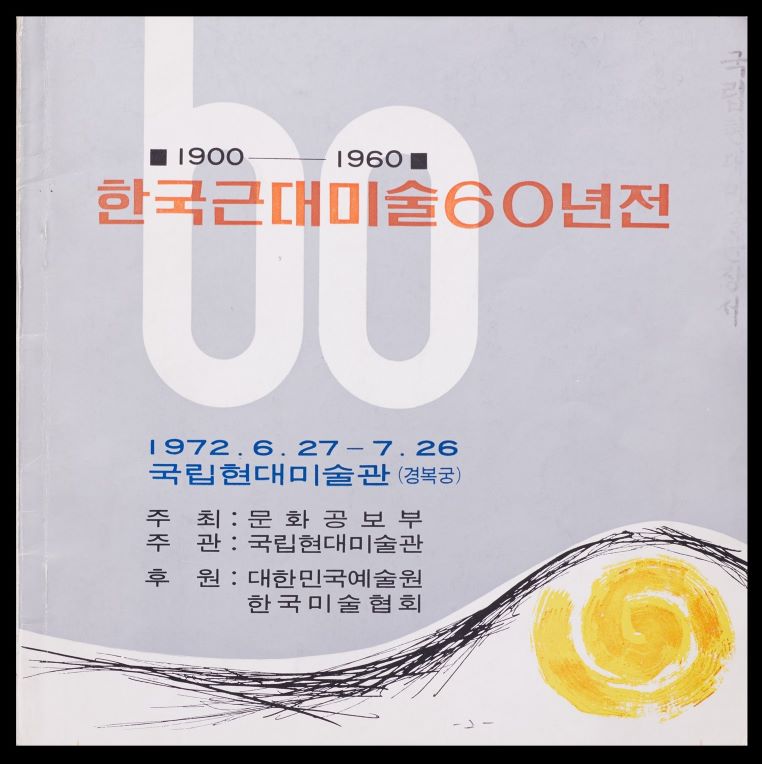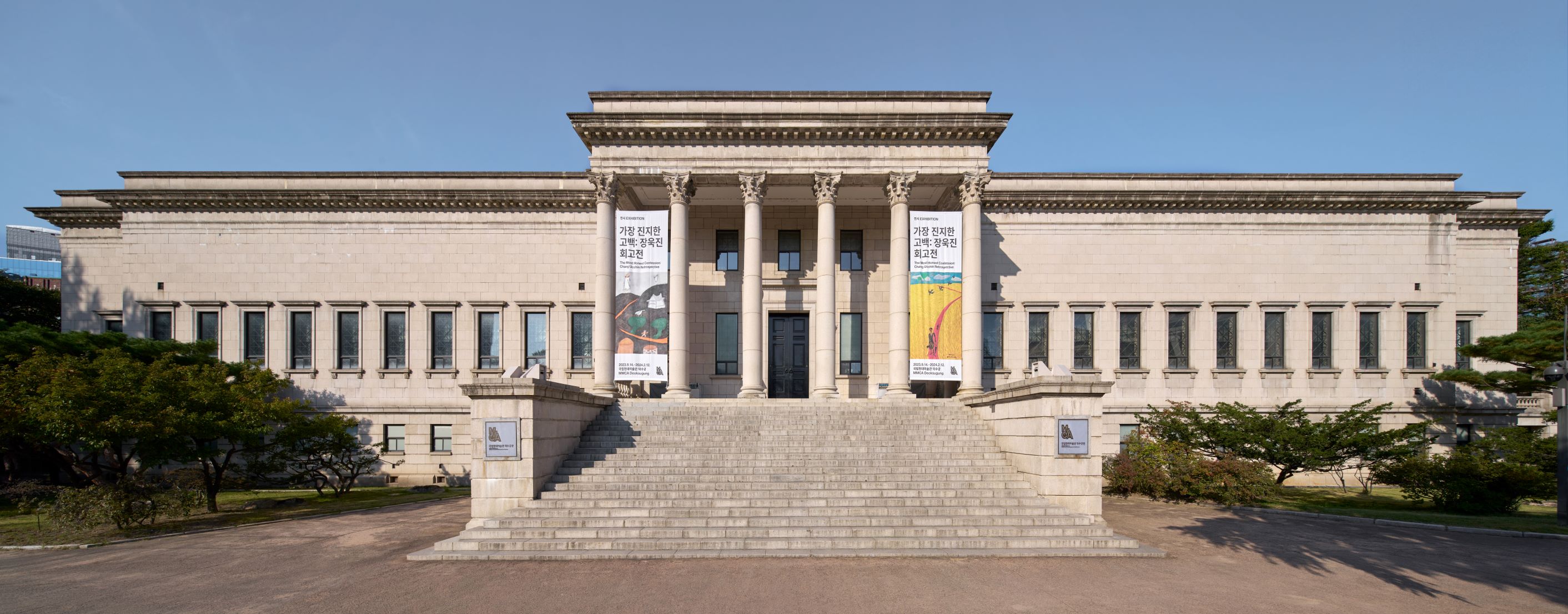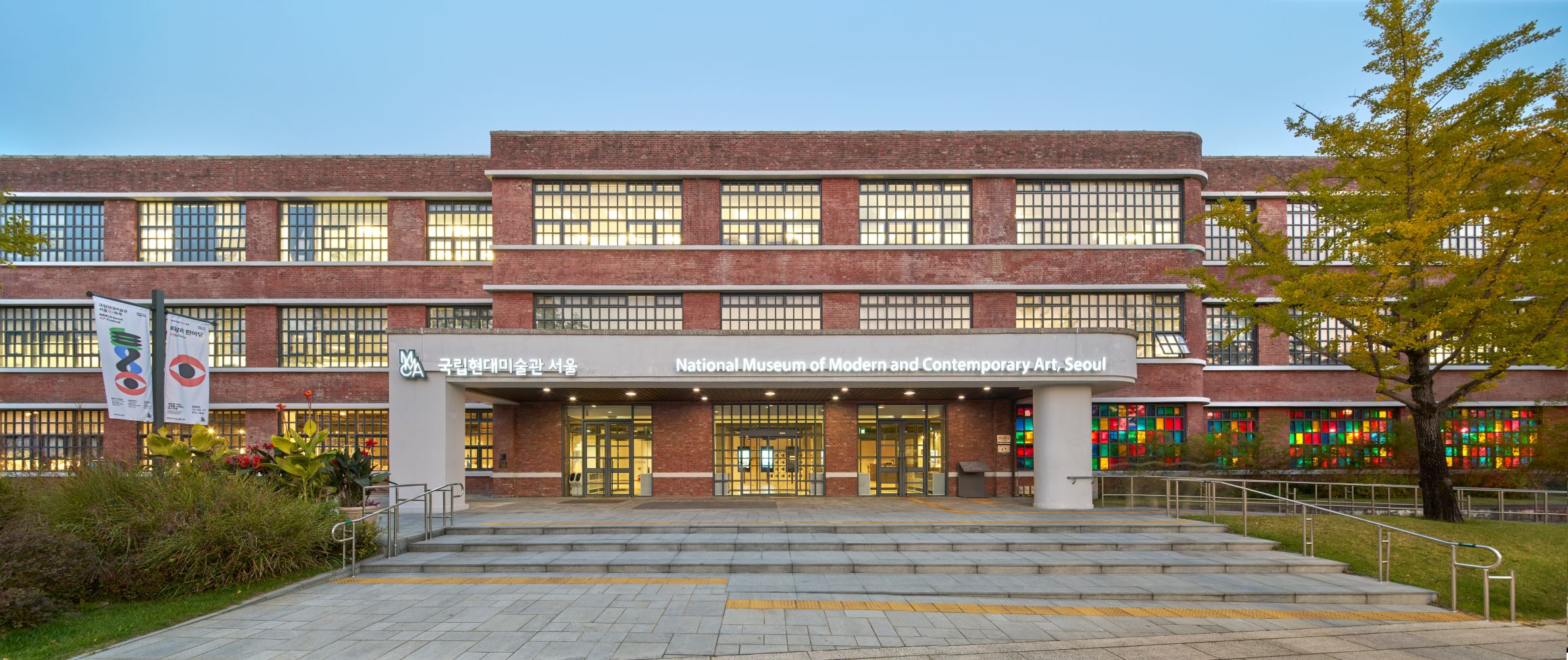
Korean Modern Art Revisited, Poster, 1998, MMCA Art Research Center Collection
Korean Modern Art Revisited
* Source: MMCA
Related
-

60 Years of Modern Korean Art
An exhibition held from June 27 to July 26 1972 at the National Museum of Modern Art, Korea (now MMCA). The exhibition was the first to focus on Korean modern art, and is considered the foundation upon which the museum established its own collection. Artists such as Kim Eunho, Kim Kyongseung, and To Sangbong, and art historians such as Lee Kyungsung and Choi Sunu planned the exhibition together. The museum did not own many works of modern art at the time, so the artworks were collected from the artists, family members of artists, and collectors through public media advertisements. A total of 564 works were exhibited, including ink wash paintings, oil paintings, calligraphy, and sculpture. The museum purchased the works that were exhibited on a steady basis thereafter to establish its own collection. Many artworks that are today considered as highly significant, including Lee Chongwoo’s Still Life with a Doll (1927), Lee Jungseop’s Fighting Fowls (1955), Ko Huidong’s Self-portrait (1915), Gu Bonung’s Portrait of a Friend (1935), and Kim Whanki’s Rondo (1938), all became part of the museum’s collection through this exhibition.
-

Deoksugung Museum of Art
A term that refers to two separate art museums that have existed in the grounds of Deoksugung palace at different times. First, the Yi Royal Family Museum, which was built in 1938 and renamed the Deoksugung Museum of Art after independence in 1948. This iteration of the Museum was merged with the National Museum of Korea in 1969. Separately, in 1998 a branch of the National Museum of Contemporary Art, Korea (now MMCA) was established at this location, and also named the Deoksugung Museum of Art. In 2013, the official name of the branch was changed to the National Museum of Modern and Contemporary Art, Deoksugung but some people still use the previous name, Deoksugung Museum of Art.
-

National Museum of Modern and Contemporary Art, Korea (MMCA)
A national museum established in 1969 that researches, collects, and exhibits modern and contemporary art. As of 2018, there are branches in Gwacheon, Deoksugung, Seoul, and Cheongju. When first established, the National Museum of Modern Art (now MMCA) was located within Gyeongbokgung palace. In 1973, the museum moved to the East Wing of the Deoksugung Seokjojeon building. Then, in 1986, the museum moved to its current location in Gwacheon, to occupy a new building equipped with an outdoor sculpture exhibition space, and has since opened a new chapter in Korean art. The perceived need for a space to focus specifically on Korean contemporary art led to the establishment of further site, the National Museum of Contemporary Art, Deoksugung in 1998. In November 2013, a further demand for contemporary art exhibitions led to the establishment of another Seoul branch being created in the Defense Security Command building in Sogyeok-dong, Jongno-gu, which has since its inception engaged in multifaceted exhibitions of both domestic and overseas contemporary art. Also, as a further component of the MMCA complex, a disused tobacco factory in Cheongju was remodeled to provide a home to the National Art Storage Center.






